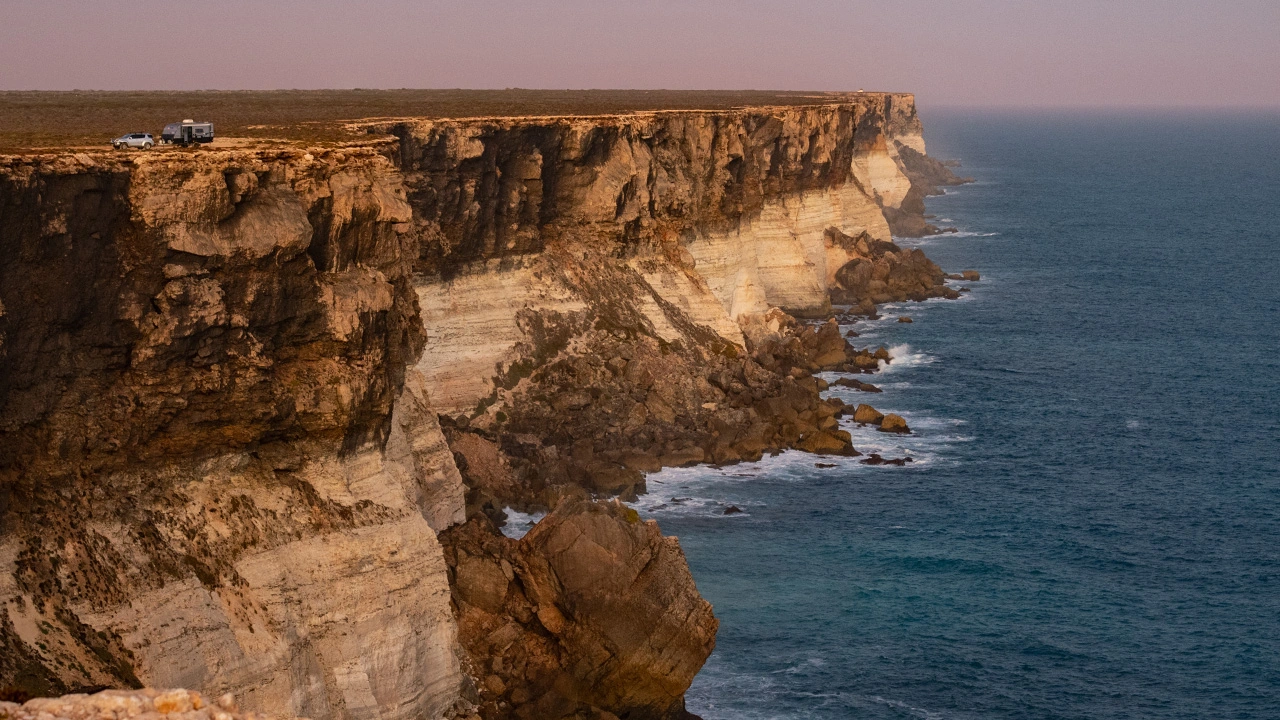From fishing to caving and remote 4WDing, the Great Australian Bight offers surprises at every turn.
Story + Photos Mandy McKeesick
Across the glassy clear waters of Venus Bay, SA, a well-worn tinnie motors back to shore with the morning’s catch – a couple of sand crabs, one salmon, 2 King George whiting and a lone abalone. The skipper peels off a 7mm thick wetsuit and winds through the waiting pelicans to find his trailer in a makeshift car park on the white sand.
On the adjacent curved jetty, commercial fishing boats wait for their run around the headland where the cliffs fragment, the water darkens and deepens and the Southern Ocean rolls with intent. Today that ocean is benign, but memorials to those lost stand as testament to its menace. This is the eastern shoulder of the Great Australian Bight.
It is not hard to imagine the Bight as a bite, as though some mythological being has sunk gigantic teeth into the southern edge of the country and torn free a crescent-shaped chunk. The Bight’s formation is as dramatic. Tectonic wrenching in the Jurassic–Early Cretaceous period broke apart the supercontinent of Gondwana here to form what we know as Australia and Antarctica.
Geoscience Australia defines the Bight as stretching for approximately 2,200km from Cape Carnot, SA to Cape Pasley, WA. Best known for its towering coastal cliffs, it is also a region of expansive beaches, secluded bays, limestone caves and surprises.
Cape Carnot lies at the pointed end of the Eyre Peninsula and, as the Bight curves north-west, it is dotted with fishing villages similar to Venus Bay. In autumn all are crowded with fishers, many who make annual pilgrimages from northern Australia to share in the bounty. Coffin Bay is renowned for oysters, Elliston hosts the Australian Salmon Fishing Championship, Streaky Bay’s takeaway fish and chips by the jetty are a must, at Smoky Bay the keen go looking for razorfish and tuna boats ply the waters off Ceduna.
Fowlers Bay, 150km west of Ceduna, is the last in a chain of bays across SA. Here a 340m squid-inked jetty stabs into the Bight and moving white sand hides history. Chair of the Fowlers Bay Progress Association, Lorraine Balharry, has lived here since 1985 but does not yet consider herself a local. “Ours is typical of the history of the west Eyre Peninsula,” she says. “The Wirangu were the first people – the sky people. Flinders charted the coastline and named Fowlers Bay in the early 1800s. Eyre camped in the sand hills in the 1840s and at the same time whalers dragged whales to our shore. Whale bones are still buried beneath our dunes.”
This story excerpt is from Issue #152
Outback Magazine: Dec/Jan 2024









